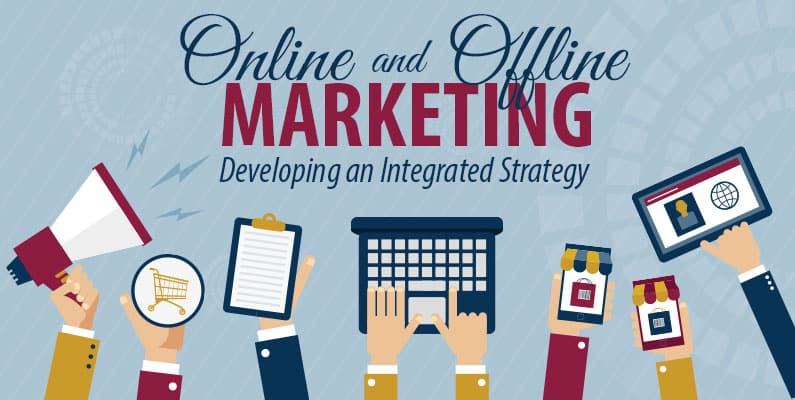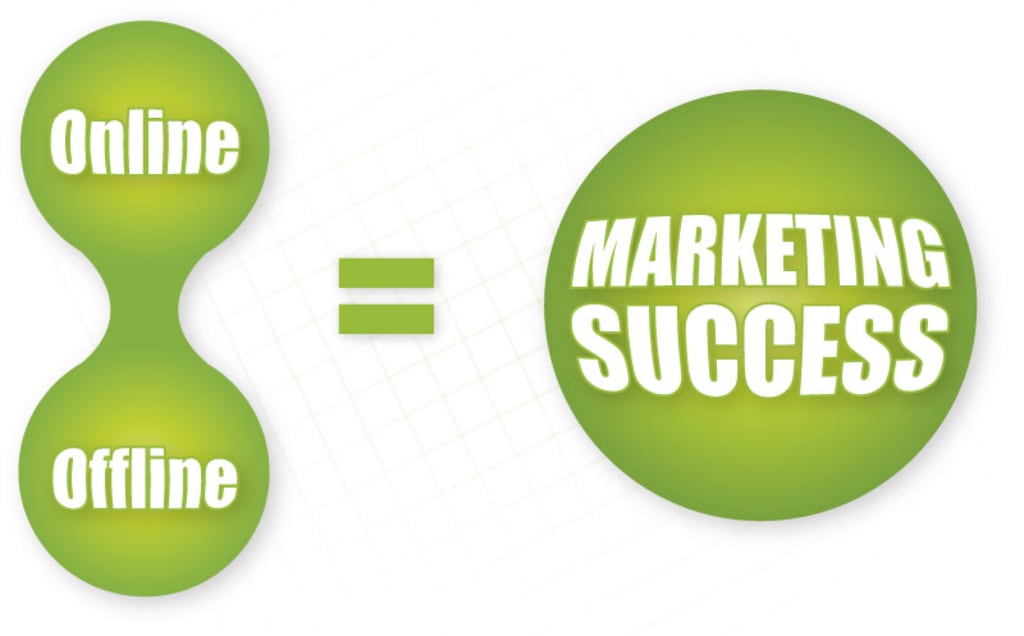
Offline and Online Marketing Strategies
Combining Online and Offline Marketing
It’s important that every interaction your customers have with your business or brand is the same. The same look, feel and message. Also the same goods or services offered in the same way. That’s why it’s essential to combine both your online and offline marketing strategy. Your customers need to be greeted by the same messages and branding online. That they’re used to seeing in your retail space and vice versa.
What is Offline Marketing
Offline Marketing refers to creating brand awareness through traditional marketing strategies. These strategies do not involve the direct use of the Internet. This includes television and radio ads, direct mail, print publications, outdoor advertising, joining trade shows and festivals, promotional gifts, and even word-of-mouth.
What is Online Marketing
Online Marketing utilises the Internet, its tools and applications to increase brand awareness. This includes registering on online listings, search engine optimisation (SEO), website creation, social media, online banner advertisements, email marketing, video blogging, and others.
How to Merge These Types?
Both online and offline brand marketing work well on their own. But, if you can successfully merge them, it’s almost like discovering you’ve got a new marketing superpower!
Use online calls-to-action (CTA) on your offline promotion pieces.
On your printed collateral and print ads, create reasons for your audience to visit a dedicated landing page (versus your homepage) to capture contact information for subsequent follow-up. Entering a contest or offering free value added content such as an e-book. Or white paper are good tools to gain that all important e-mail address.
Use online engagement results to drive offline campaigns.
Use your most popular image on social media. Something you know your target audience obviously likes and use it as the main image for your next print campaign. This will create a cohesive brand experience. And really connect the dots for your audience between their online and offline interactions with your brand.
Start a “to be continued” campaign.
Why not begin a story offline and then continue it online? By doing so, you can send the viewer to a landing page or your social media platforms where they will find additional content (and a specific CTA). For example, write a print article and include a call-to-action along the lines of “to comment on this, use #articletitleon social media.” Or “find out more at www.yoursite.com/landingpage.”
Create p URLs for mailers.
This is something being used creatively by the higher education marketing community. Here’s how it works. Use your mailing list to create a Personal URL or pURL, which is a URL created for an individual in order to track that person’s activity. Next, use a variable printing service to create a direct mailer specific to each person on your mailing list. The result? You’ll be able to track engagement, capture information, and identify your hottest prospects.
Place digital contact info on business cards.
Make sure your business cards have digital contact information, such as email addresses, Twitter handles, etc. on them. Doing so will help expand the relationship from offline to online and increase marketing opportunities.

